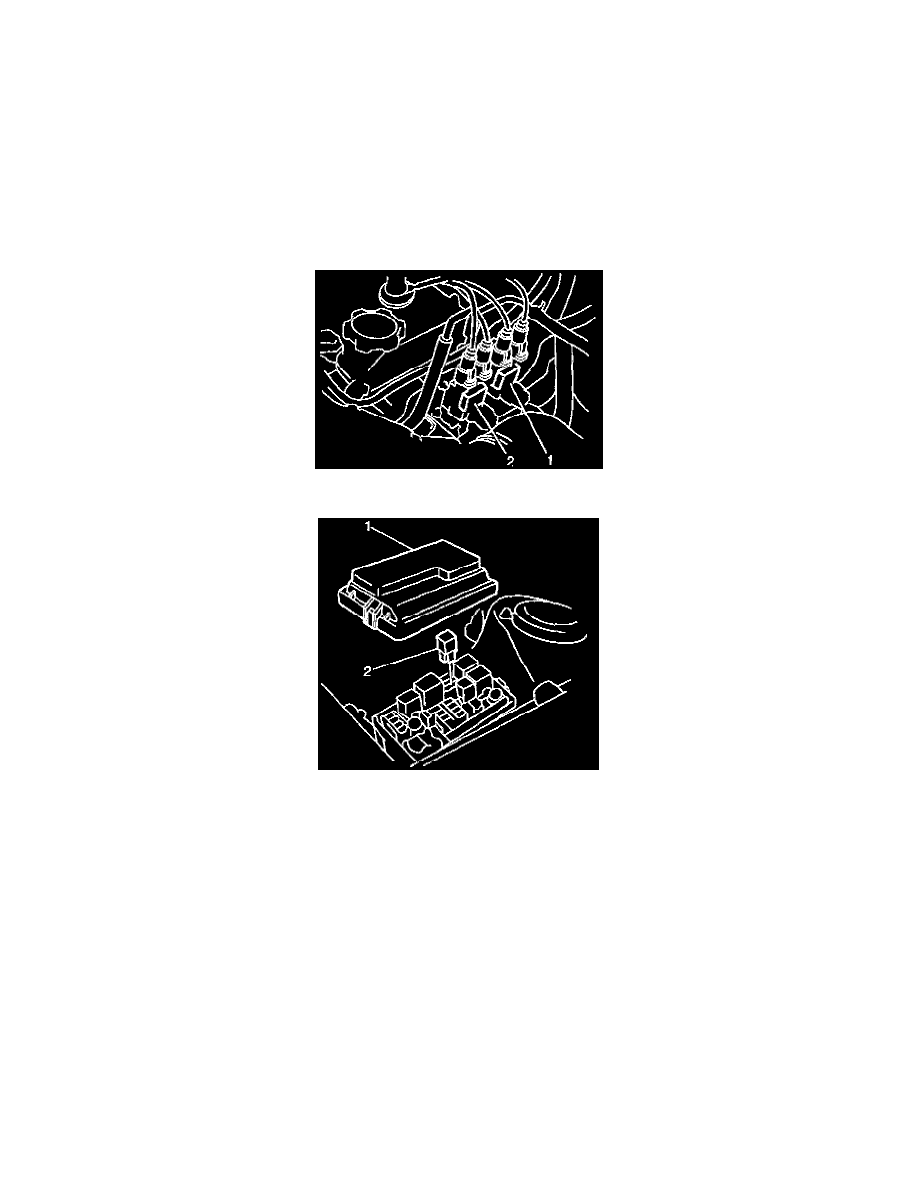Prizm L4-108 1.8L DOHC VIN 8 MFI (1998)

7. Depress the clutch pedal (on vehicles that are equipped with a manual transmission).
8. Depress the accelerator pedal to the floor for a wide open throttle.
9. Crank the engine through four compression strokes for each cylinder being tested.
IMPORTANT: The maximum allowable compression pressure difference between any two cylinders is 100 kPa (15 psi).
10. Measure the highest pressure reading on the compression gage.
-
The standard compression pressure is 1,500 kPa (218 psi).
-
The minimum allowable compression pressure is 1,000 kPa (145 psi).
11. Repeat the compression test procedures for the remaining three cylinders.
12. Remove the compression gage from the engine.
13. Install the four spark plugs.
14. Reconnect the electrical connectors at both ignition coils (1,2).
15. Reconnect the EFI Main Relay (2) to the Fuse/Relay Block 1.
16. Inspect for the following conditions:
-
Normal operation
The pistons, piston rings and valves are operating normally if the cylinder compression pressure increases quickly and evenly to the
compression standard 1,500 kPa (218 psi).
-
Faulty piston rings
The following actions indicate that the piston rings are faulty:
-
The cylinder compression is low on the first stroke.
-
The cylinder compression increases on the following strokes but does not reach the compression standard.
-
Faulty valves
The following actions indicate that the valves are faulty:
-
The cylinder compression is low on the first stroke.
-
The cylinder compression does not increase on the following strokes.
